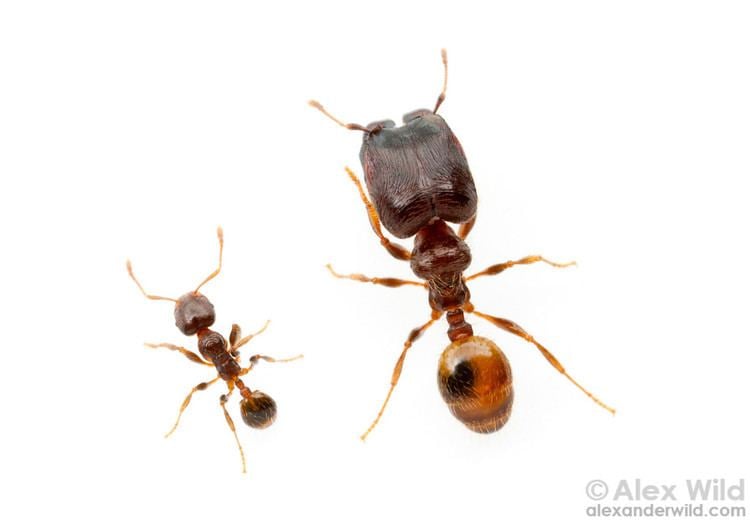Scientific name Pheidole Order Hymenopterans | Family Formicidae Tribe Attini Higher classification Pheidolini Rank Genus | |
 | ||
Lower classifications Pheidole megacephala, Pheidole pallidula, Pheidole harrisonfordi, Pheidole elecebra, Pheidole argentina | ||
My pheidole queens
Pheidole is a genus of ants that belongs to the ant subfamily Myrmicinae. The genus is widespread and ecologically dominant. It probably includes more than a thousand species. The genus first evolved in the Americas, eventually spreading across the globe.
Contents

Pheidole sp
Colony structure

Most species of Pheidole are dimorphic, which means that colonies contain two castes of workers: the "minor" workers, and the "major" workers, or "soldiers". The latter generally have enormous heads and mandibles in comparison to their usually fairly modest body size.

In addition, as in other ant species, a colony may contains one or several queens and also, in mature colonies, alates, virgin winged females and males.
Major workers

The distinctive major workers have earned the genus Pheidole the nickname of "big-headed ants." The major workers of a Pheidole colony, while they may look fierce, are often quite shy and are often the first to flee on any hint of danger. Many Pheidole species are the prey of parasitoid phorid flies that lay their eggs on the major workers; the fly larvae grow mainly in the head capsules of the victims, eventually decapitating them, and probably would starve in the bodies of minor workers.
In most cases, the major workers are employed within the nest to break up large food items, or outside to carry large items, such as seeds; many Pheidole species are ecologically important seed consumers ("harvesters").
Species list
The genus contains over 1,000 species. They include:
